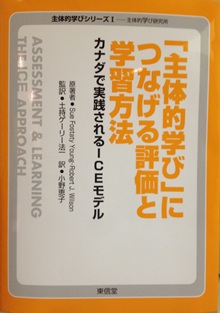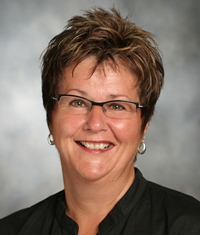Queen's-developed model of learning a hit in Japan
August 7, 2013
Share
By Wanda Praamsma, Communications Officer
 Queen's in the World
Queen's in the WorldUsing the ICE (Ideas, Connections, Extensions) approach to teaching, learning and assessment, instructors focus on helping students learn to learn. Rather than emphasizing the what, they focus on the how, of learning.
 Assessment and Learning: The ICE Approach was recently published in Japanese.
Assessment and Learning: The ICE Approach was recently published in Japanese.It’s an approach co-developed by Sue Fostaty Young, an educational developer in Queen’s Centre for Teaching and Learning (CTL), and it is becoming increasingly popular around the globe.
Dr. Fostaty Young recently visited Japan, where the book, Assessment and Learning: The ICE Approach, co-written with former colleague and Queen’s professor Robert Wilson, was recently published in Japanese. During the visit, Dr. Fostaty Young was invited back next year to meet with the Japanese deputy minister of education, who is interested in discussing the model’s impact on higher education reform.
“It really is causing a ripple over there,” says Dr. Fostaty Young. “The Japanese are looking for more active approaches to teaching and learning, and the beauty of the ICE approach is that it transcends cultures. It seems to work for everyone, regardless of where they come from or what language they speak.”
Simple and easily remembered, the ICE approach describes three frames of learning: Ideas, Connections and Extensions. The three frames represent three different levels of learning growth, from novice through to competence and expertise. Ideas represent the building blocks of learning – the fundamental pieces of information that students acquire, then possess. They include facts, definitions, vocabulary, steps in a process, or discrete skills.
 Sue Fostaty Young
Sue Fostaty YoungConnections represent the points at which students can articulate relationships between the Ideas, between the facts they’ve learned, and when they are able to relate their new learning to what they already know and make it more meaningful at a personal level. At the Extensions stage, new learning is created from old learning so that students are able to use it in creative ways. It is often referred to as the “aha!” phase or the “so what?” phase, where students are able to address and answer different, more critical questions and understand the implications of their learning.
“ICE integrates all domains of learning – the cognitive, the psychomotor, and the affective,” says Dr. Fostaty Young. “It also provides teachers with an accessible vocabulary, which is easily shared with their students. It’s a way to organize their teaching and it helps make teaching more purposeful.”
The effect on students is transformative. Students begin to understand the vocabulary and can anticipate and begin to plan their own learning. It makes for a more engaged learning process, and in the end, the success of ICE is when students apply the model, without assistance, and in situations of their own making.
The effort to publish Dr. Fostaty Young’s book in Japan was spearheaded by Gary Tsuchimochi, director of Teikyo University’s Centre for Fundamental Education, who was captivated by the ICE approach and wanted to introduce it to Japan’s education system. Dr. Fostaty Young is discussing with Dr. Tsuchimochi and Toshiaki Endo, Japan’s Deputy Minister of Education and Chair of the Educational Reform Committee, the uses of the ICE model at Queen’s and the possibility of providing online and in-person workshops to university faculty members in Japan. She will likely meet with Mr. Endo in Japan in spring 2014.